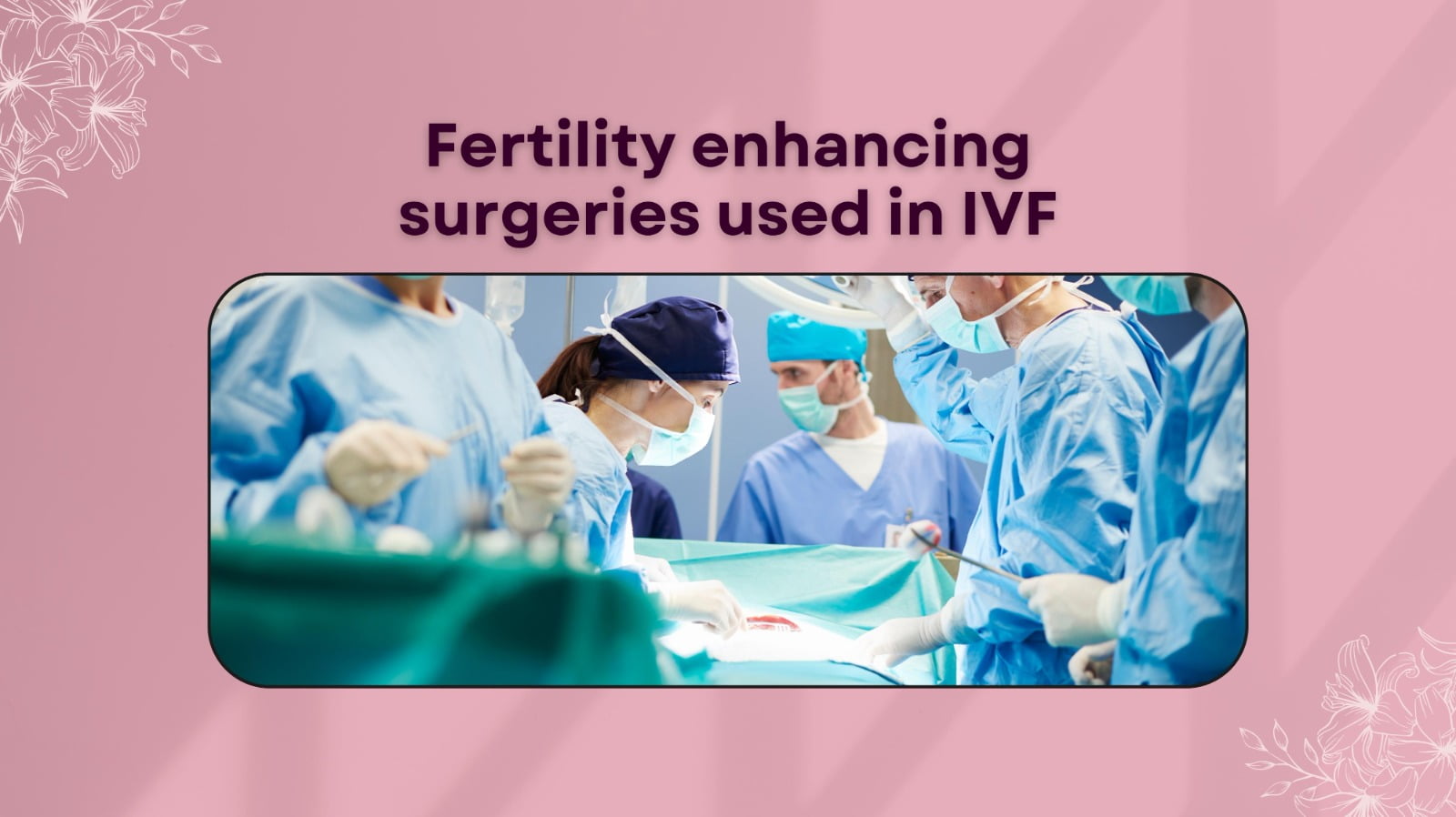



In vitro fertilization (IVF) has opened doors to parenthood for countless couples facing fertility challenges. While IVF is a highly effective method on its own, it is sometimes complemented by fertility-enhancing surgeries. These surgical interventions can address specific issues that may be hindering conception. In this blog, we will explore the various fertility-enhancing surgeries used in conjunction with IVF to help couples achieve their dream of parenthood.
Laparoscopy and Hysteroscopy
Laparoscopy and hysteroscopy are minimally invasive procedures that help diagnose and treat various conditions affecting fertility.
Laparoscopy:
Hysteroscopy:
Ovulation Induction Surgery
Ovulation induction surgery when women experience difficulty ovulating due to polycystic ovary syndrome (PCOS) or other hormonal imbalances Surgery may involve drilling small holes in the ovaries (ovarian drilling) to restore regular ovulation.
Tubal Surgery
Blocked or damaged fallopian tubes can prevent fertilization and embryo transport. Tubal surgeries, including tubal reanastomosis (reconnecting tubes) or salpingectomy (removal of damaged tubes), can be performed to restore fertility. However, success rates vary depending on the extent of the tubal damage.
Myomectomy
Fibroids, also known as uterine leiomyomas, can negatively impact fertility. Myomectomy is a surgical procedure aimed at removing these non-cancerous growths from the uterus. Once the fibroids are removed, women may experience improved fertility and higher success rates in IVF treatment.
Varicocele Repair
In some cases, male infertility can be attributed to a varicocele, which is the enlargement of veins within the scrotum. Repairing the varicocele through surgery can improve sperm count, motility, and overall sperm quality, enhancing the chances of successful IVF.
Endometrial Receptivity Analysis (ERA)
ERA is a groundbreaking procedure that assesses the receptivity of the uterine lining (endometrium) for embryo implantation. It involves a biopsy of the endometrial tissue and helps determine the optimal timing for embryo transfer during IVF. By identifying the window of implantation, ERA increases the likelihood of successful implantation and pregnancy.
Preimplantation Genetic Testing (PGT)
Although not a surgical procedure per se, preimplantation genetic testing (PGT) is often integrated with IVF to enhance the chances of a successful pregnancy. Prior to transfer to the uterus, PGT entails checking embryos for genetic anomalies. This reduces the risk of implantation failure or pregnancy loss.
Conclusion
Fertility-enhancing surgeries used in conjunction with IVF can make a significant difference for couples striving to overcome infertility. These procedures address a range of issues, from structural abnormalities to hormonal imbalances, and aim to improve the chances of successful conception and pregnancy. The combination of medical expertise, advanced surgical techniques, and IVF can bring you closer to the dream of parenthood, offering hope and solutions for those who have struggled to conceive.